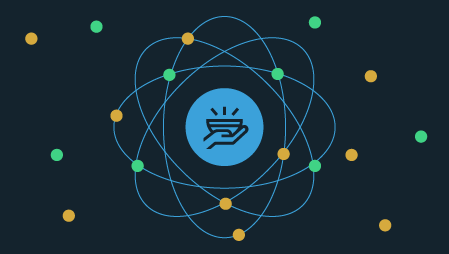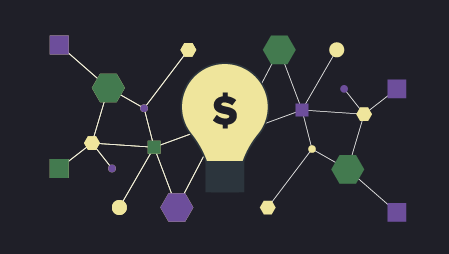One of the biggest issues companies face when starting an IoT project is deciding who should be responsible. Should it be the engineering team that is responsible for the core technicalities of the device, or should it be the product management team that is responsible for the end functionalities of the IoT product?
Starting on an IoT product involves making strategic, yet challenging decisions, especially with IoT becoming a popular subject across industrial and commercial enterprises. By 2021, industry leaders expect over 35 billion installed IoT devices worldwide.1
And, why not! The promise of better connectivity enhanced monitoring, and measurable efficiency improvements give a clear competitive advantage to an organization. However, focusing on just the technical aspects of the IoT project is not enough. Organizations need to consider end-user experience to unleash the real value of the IoT product and offer long-term success.
Here are some key IoT fundamentals to follow while building an IoT device and launching it in the market.
- Understand the Problem
When you start with your IoT project, know the problem you are trying to solve. Approaching the right problem saves you time as well as financial resources. The more specific you can get, the better you can address the challenge. You can even refer to specific use cases to derive insights and create value for the IoT concept.
The next best way to understand what’s needed to solve your problem is to build a prototype. This helps you to discover the minimum parameters required to complete your IoT project before deploying. You can even work on any skill or technology gap and make adjustments while it’s still easier and affordable. Although prototyping can be time-consuming, it’s worth the time. A focused IoT approach that solves problems can easily improve the way companies conduct business.
- Plan Cost and Considerations
Planning to invest in an IoT project and its implementation is a crucial part of your IoT journey. It can either make or break your organization’s digital transformation initiative. Knowing your IoT costs ahead of the IoT project helps you resolve challenges, reduce the risk of failure, and provide end-to-end benefits.
From a financial perspective, IoT solutions have three key consideration elements:
- Hardware Consideration (The Thing)
Leaders looking to build an IoT solution must know the basic building blocks well. In this case, it means procuring the correct hardware that fits the engineering and designing needs of the IoT project without compromising its maintenance and updates.
Hardware development is usually expensive and time-consuming as it involves designing and prototyping. But, with the growing availability of low-cost off-the-shelf hardware development boards, platforms, and prototyping kits, developing IoT applications is becoming more accessible.
Designers can substitute new sensors with different specifications based on the needs of the IoT project. You can independently upgrade the networking, data processing, or storage modules of a device with the evolving requirements of the IoT project.
- Software Consideration (the IoT App)
An IoT platform delivers zero value until it becomes IoT Software. Hence, it’s important to select an IoT platform that provides the software capability needed by your solution and fits with your business constraints.
From an economic standpoint, creating an IoT solution from scratch can be expensive. Instead, use an IoT platform configuration and customization approach to significantly reduce the development cost of an IoT solution and its time to market. Evaluate the upfront costs or fees, whether they are one-time, recurring, monthly, or annual. This is not just done for the development effort, but for the life of the product.
- Communication Layer Cost (connecting the above two)
Factors such as the data payload, communication protocol and frequency, connectivity and edge processing, and the physical environment of the device have a direct impact on the communication costs. These costs can be reduced by using IoT-centric communication options such as a no-recurring-fee cellular IoT option or a lightweight communication protocol. The key is to focus on essential data transfer with minimal carrier fees.
Another cost is the operating cost of each product or device that will be connected to the cloud for its entire service life.
- Operating Costs
IoT solutions combine multiple technologies that need continuous performance monitoring in order to optimize operating costs. Some of the options to optimize operating costs are:
- Upgrading software across the device, as well as communication, and application layers to support high availability and security.
- Query Optimization at the database level.
- Device Payload optimization to minimize communication costs and errors.
- Real-time and predictive analytics to provide timely business insights.
- Tuning alerts and alarms generated by the IoT system to drive business value and customer experience.
- Optimizing API services to speed up integration with new or evolving corporate systems.
- Choose a Strong Business Model
As IoT is constantly evolving, companies need to stay updated on various forms of business models for optimizing maintenance and improving products. Only then can one find the right IoT business model for increased revenue and growth. A strong IoT business model supports a viable business for customers, and it also delivers value easily and efficiently.
The following are a few of the most popular business models in 2021:
- Platform Business Model – The platform-based business model combines manufacturers and consumers to generate revenue from related transactions.
- Subscription Model – An IoT subscription model enables you to deliver continuous value to customers for a regular fee.
- Pay per Usage Model – Using this model, you can charge your customers for the amount of time they actively interact with the product.
- Asset Sharing Model – Businesses use this model by renting out large assets for sharing, and pay a reduced price for the equipment while still using it.
- Asset Tracking Model – This model helps businesses identify, monitor, and track assets in real-time while protecting them from loss or theft, as well as use for maintenance purposes.
- Outcome-based Model – The idea of this model is for customers to pay for the outcome of the IoT product, not the product itself.
- Compliance Model – This model reduces the cost of compliance by making your business more responsive to changes before they become a problem.
- Data-driven model – This model collects customer data from the product to be used for other products or to be sold to a third party only if you notify your customers.
- Service-adjacent model – In this model, your business offers a service that enhances the use of the IoT device, but doesn’t necessarily sell the device itself.
- Phase the IoT Project
When you are starting to work on an IoT initiative, it is best to phase it into small IoT projects to see demonstrated results. This is crucial so experts can review loopholes, test product reliability, and make it feasible to use in critical conditions. It also reduces the ioT project cost and makes the product more user-friendly.
Organizations can break the development phase into manageable tasks, or simply start with a proof of concept stage to check how well your IoT will perform. This helps to improve the manufacturing and performance of the product at a relatively lower cost. Once you are assured, you can start with the next phase without worrying about the previous stages.
- Test Often
IoT products involve a nexus of small, interconnected devices working interdependently, yet harmoniously. When an error occurs, it becomes extremely difficult to track down its origin, especially after the product is fully developed. This is why IoT projects should be tested often while still in the development phase.
Testing needs a formulated comprehensive strategy to ensure the product delivers the business value before it’s widely deployed. Each element of the product should perform all its functionalities efficiently and meet the accepted standard of quality and user experience. Performing tests identifies underlying bugs and rectifies them immediately, ensuring that the entire IoT network can work collaboratively and deliver as expected.
- Assess Your IT Infrastructure
Enterprises should do an IoT assessment to check whether the company has the right systems, processes, and technologies for IoT implementation, from networks and databases to storage and processing. IoT involves enormous data payloads, which require organizations to revise their IT infrastructure and security.
In order to redefine IT infrastructure, companies need to map their current IoT maturity level as well as technical skills to meet the business goals. Here are some major IT infrastructure questions for a quick check:
- Does your device communicate and provide real-time insights based on data?
- Is the data connected to its enterprise systems?
- Do you have central data repositories and networks that will ultimately collect and process IoT data? Or, do you need to adopt an edge computing approach?
- How are security and governance administered?
- Don’t Underestimate IoT Security
One of the most critical aspects of an IoT project is securing data, networks, and products. Hence, IT leaders must embed security in the early stages of the design process to protect IoT against open systems and malicious cyberattacks.
Unfortunately, there isn’t a ‘one size fits all’ security approach to protect every IoT deployment. Industry leaders need to go through a comprehensive security risk assessment to discover vulnerabilities in devices, networked systems, and user backend systems. They need to plan ways for users to access and control the type and amount of data without affecting the security measures and data policies.
- Manage Your IoT Ecosystem
When creating an ecosystem, there’s a spectrum of approaches ranging from closed to open. Companies choosing an open-platform approach for their IoT project need to handle ecosystems and platforms in a way that ensures that they are and will remain appealing to partners and third-party providers.
Having an open standard not only promotes further innovation but also bolsters a network effect. It releases some degree of control, which is essential for an ecosystem to thrive and respond more accurately to customers’ demands. Another way to ensure a successful business ecosystem is by adopting a balanced API usage model.
- Communicate Progress, Iterate IoT Project
An IoT project is just like any other IoT project that needs continuously progressive communication and iterative development. Especially if the team is new to the IoT project, it’s important to keep everyone informed of the IoT status. This allows consistent and successful deployment of the new product. The more you communicate internally, the more collaborative and supportive the IoT project environment becomes. This helps you to carefully plan iteration while successfully deploying the IoT products without losing the momentum of the work.
- Find the Right Partner
When working on an IoT project, don’t do all the work alone. Consult technology experts who acknowledge your business goals and make the task easier. Investing in the right partner can be transformative so that you don’t have to hire people later to fix errors. All it takes is finding a technology provider who thoroughly understands your IoT project requirements in order to get the ball rolling.
The Bottom Line
The Internet of Things (IoT) has the potential to fundamentally change how your business operates. But, starting an IoT project might feel intimidating and challenging. These 10 practices I shared in this post provide an iterative approach to discovering, ideating, and validating IoT solutions. With the right IoT expertise and IoT project strategies, you can accelerate your company’s innovation pace while meeting your customer demands and achieving business goals.





